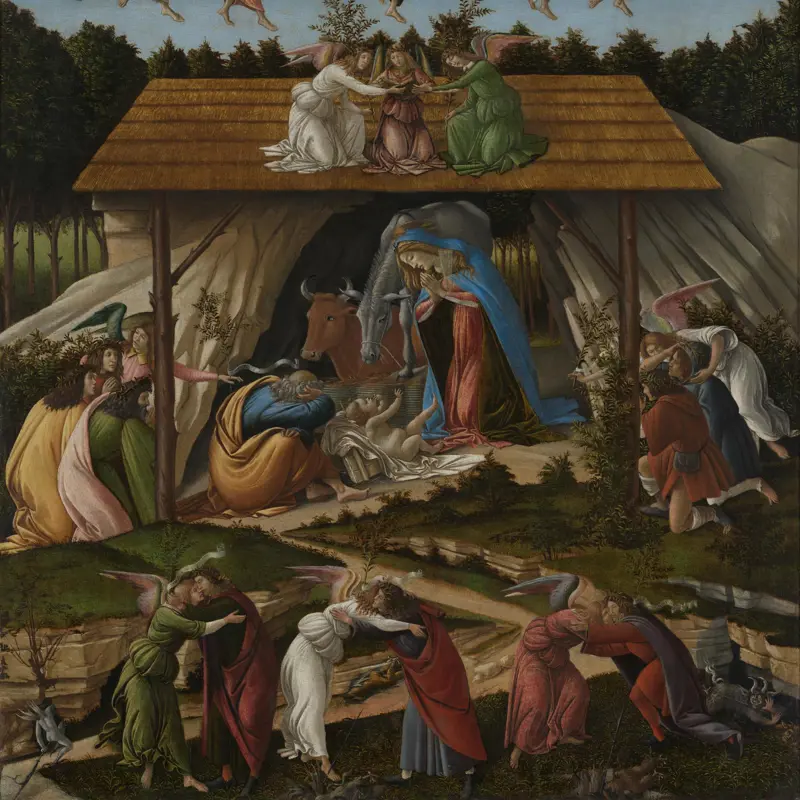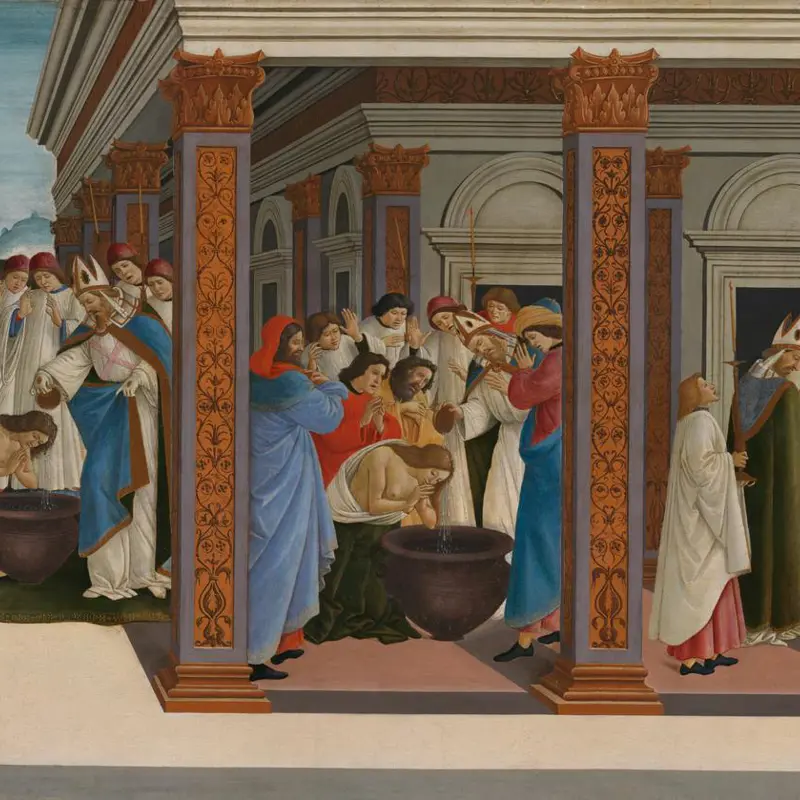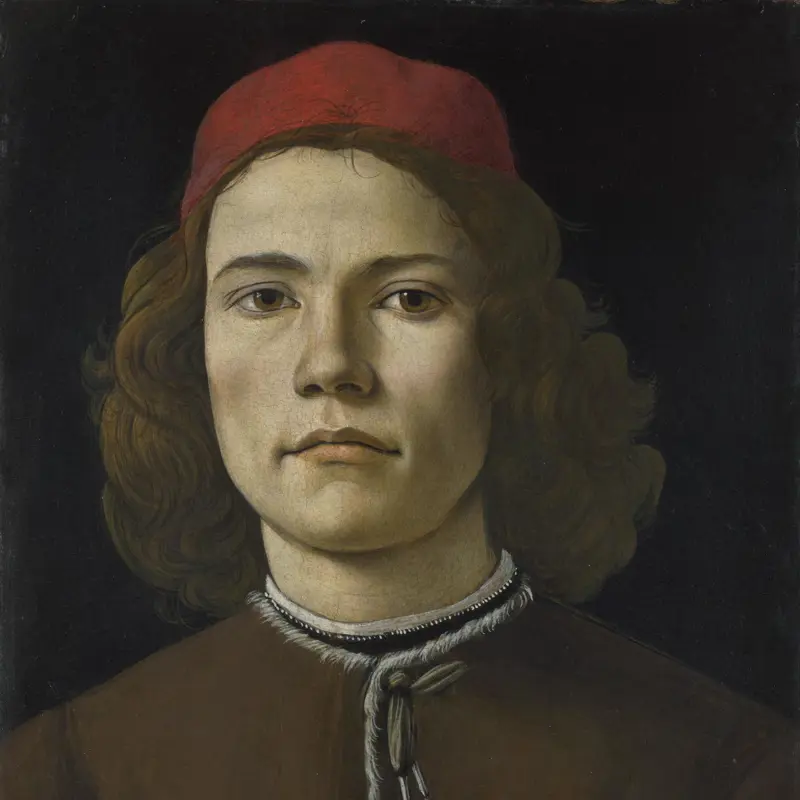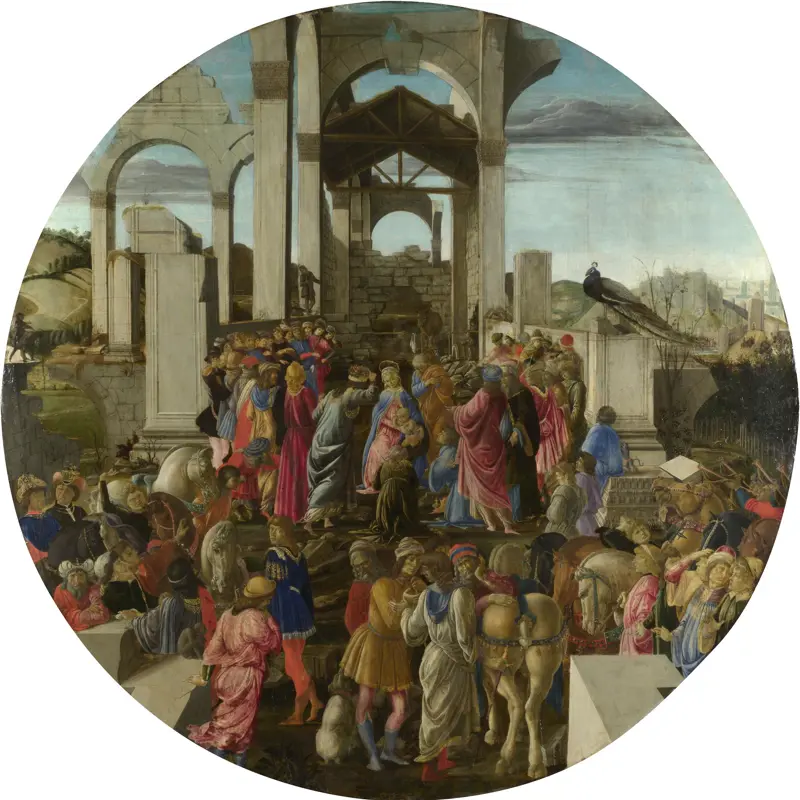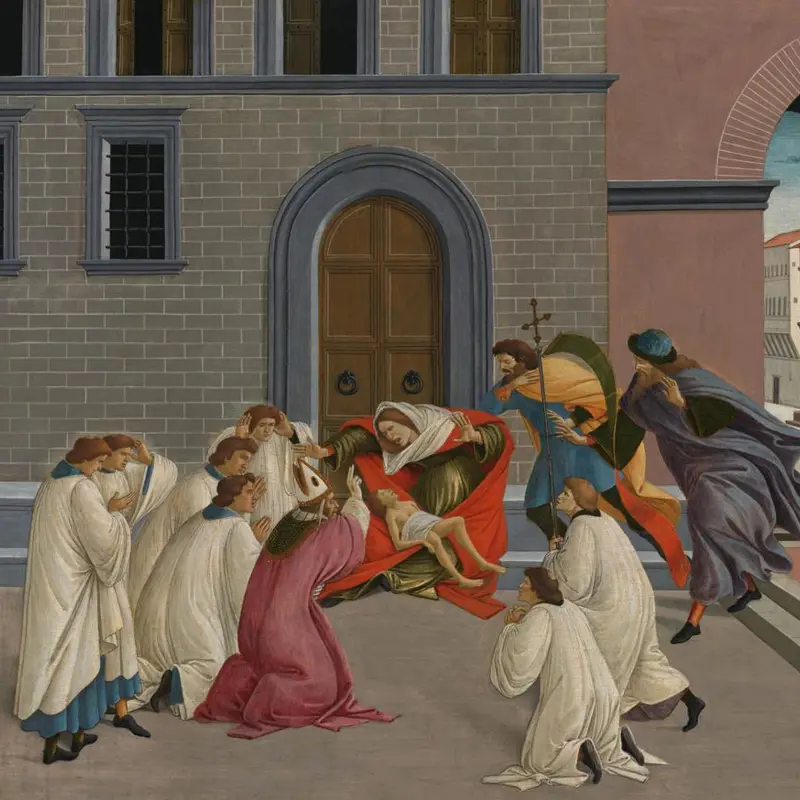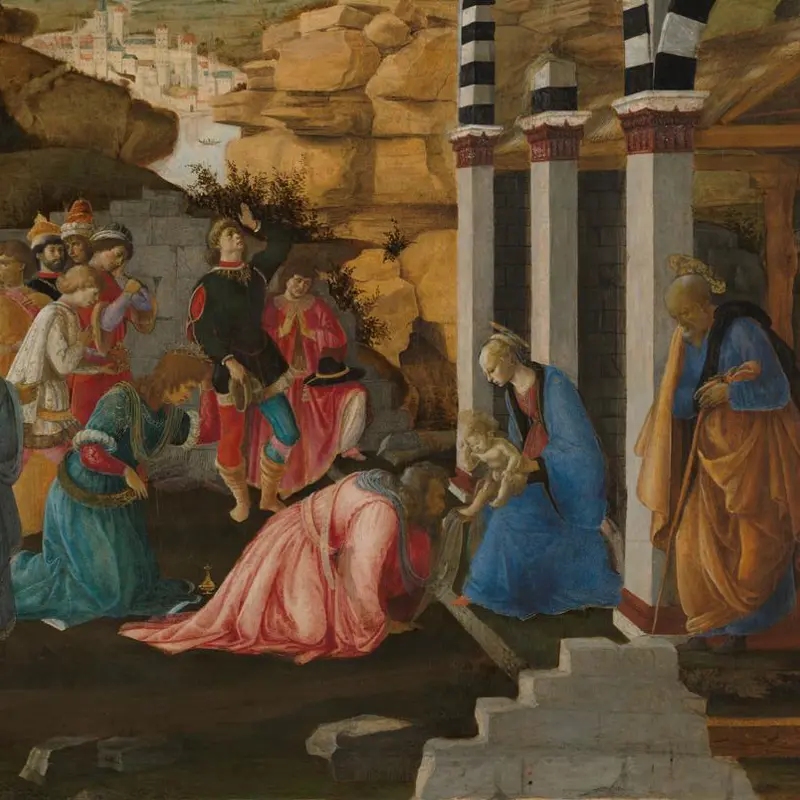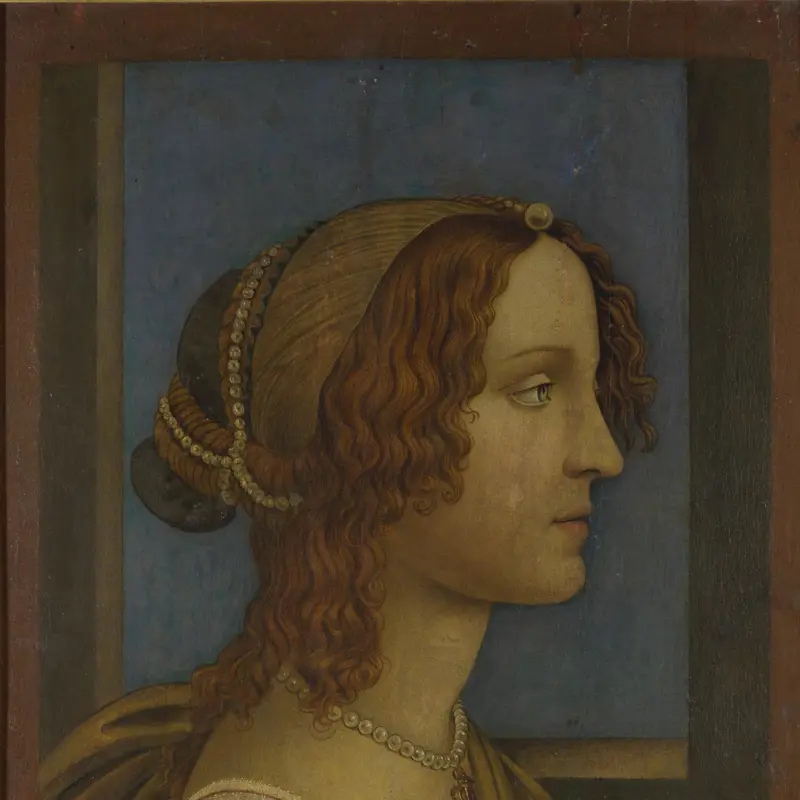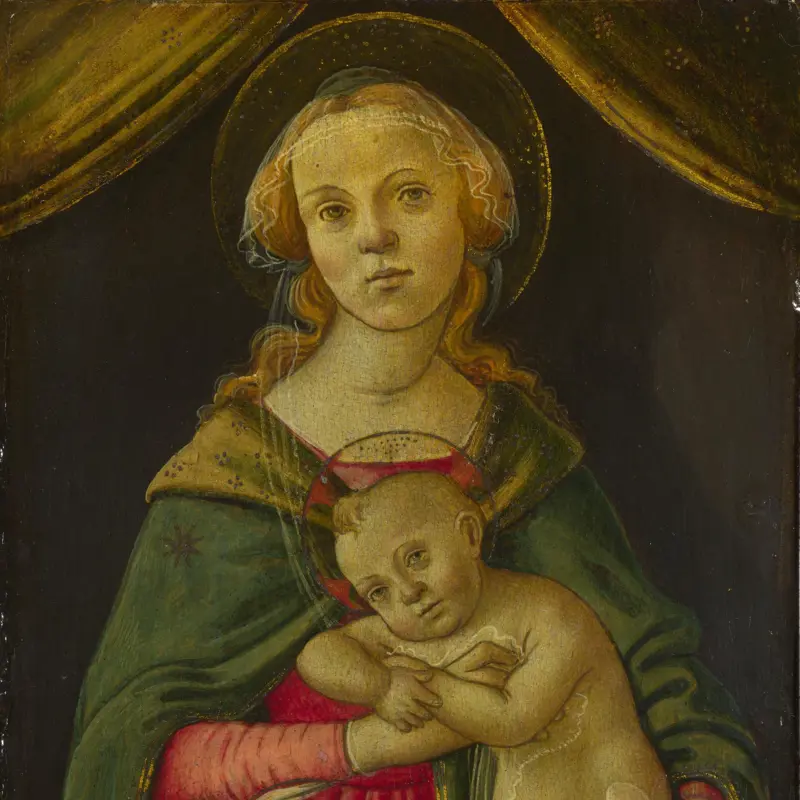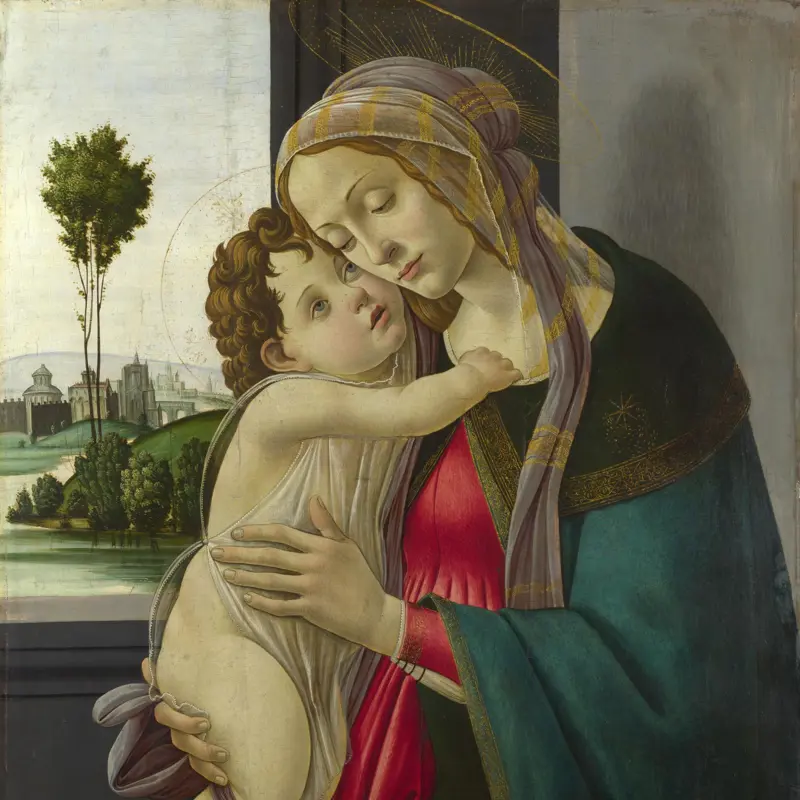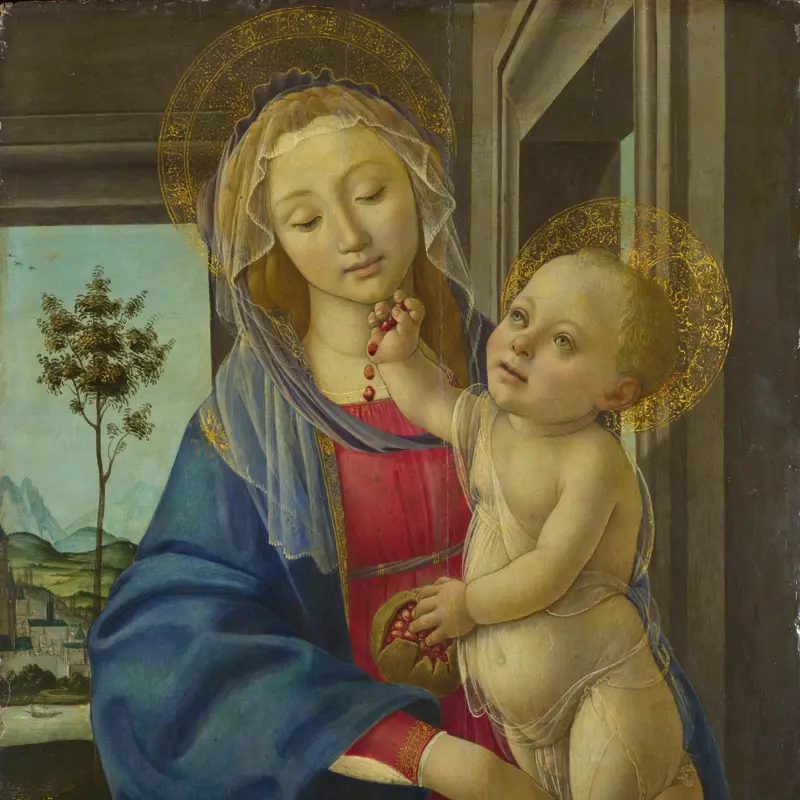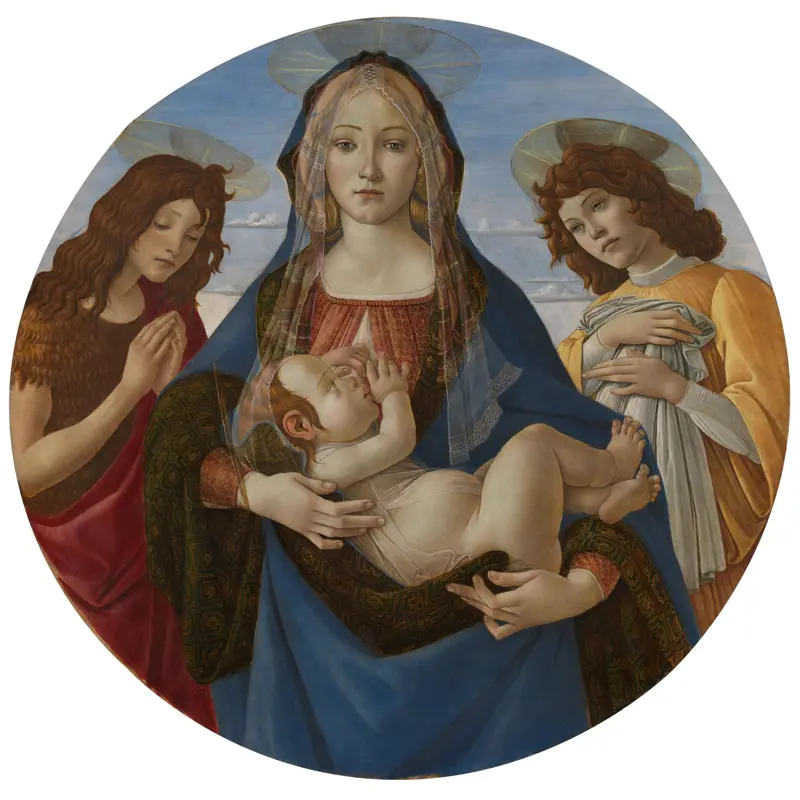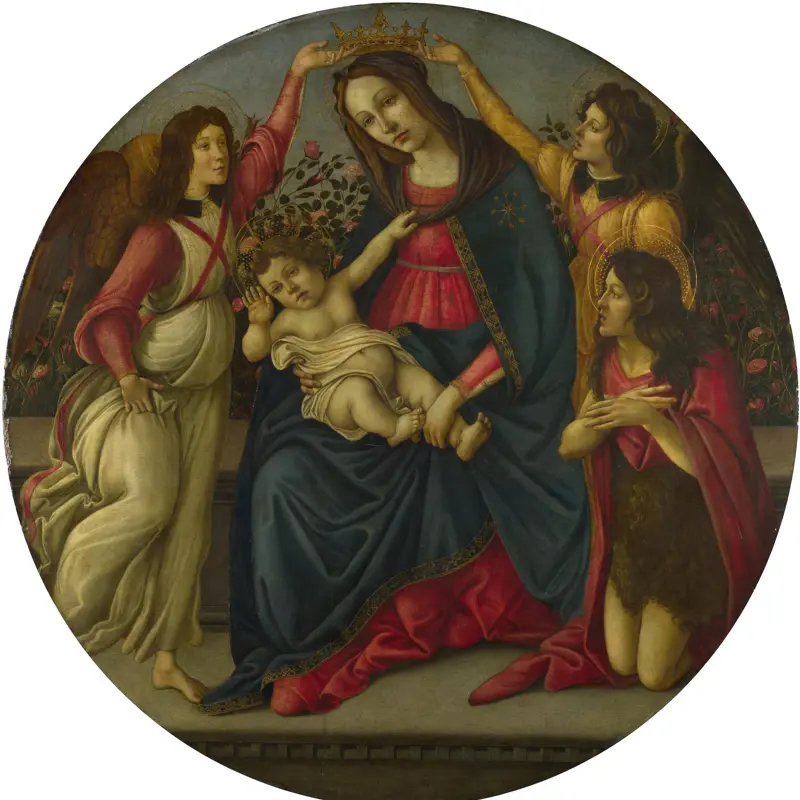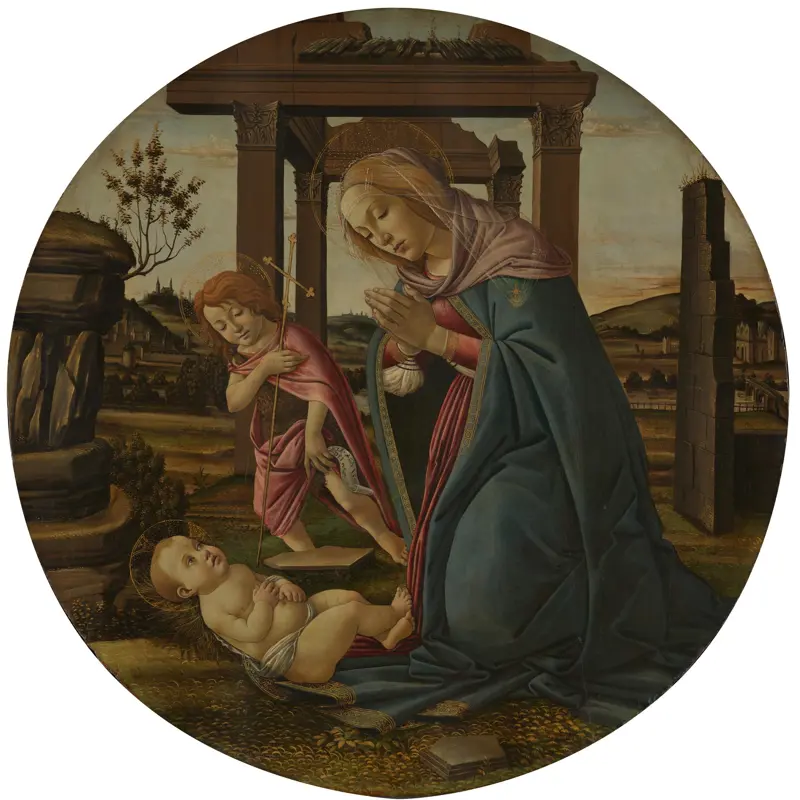Sandro Botticelli, 'Saint Francis of Assisi with Angels', about 1475-80
About the work
Overview
Saint Francis stands on a marble ledge against a golden background. He embraces a Crucifix and gazes compassionately at the tiny figure of the crucified Christ. If you look closely you can see bright red blood on Christ’s feet and his white loin cloth, where it has dripped from the wound in his side.
The saint is flanked by angels playing musical instruments, their feet supported by small clouds. His meditation on Christ’s suffering was so intense that, during a vision of Christ on the Cross, Saint Francis miraculously developed the wounds of the Crucifixion. We can see them here on his hands and feet.
The picture was once thought to be by the Florentine artist Filippino Lippi, but cleaning and restoration in 2002 revealed that it is probably an early work by his teacher, Botticelli.
Key facts
Details
- Full title
- Saint Francis of Assisi with Angels
- Artist
- Sandro Botticelli
- Artist dates
- about 1445 - 1510
- Date made
- about 1475-80
- Medium and support
- egg tempera with some oil on wood
- Dimensions
- 49.5 × 31.8 cm
- Acquisition credit
- Bought, 1858
- Inventory number
- NG598
- Location
- Room 64
- Collection
- Main Collection
- Frame
- 16th-century Italian Frame
Provenance
Additional information
Text extracted from the ‘Provenance’ section of the catalogue entry in Martin Davies, ‘National Gallery Catalogues: The Earlier Italian Schools’, London 1986; for further information, see the full catalogue entry.
Exhibition history
-
2010Close Examination: Fakes, Mistakes and DiscoveriesThe National Gallery (London)30 June 2010 - 12 September 2010
-
2014Making ColourThe National Gallery (London)18 June 2014 - 7 September 2014
-
2015Visions of Paradise: Botticini's Palmieri AltarpieceThe National Gallery (London)4 November 2015 - 14 February 2016
-
2023Saint Francis of AssisiThe National Gallery (London)6 May 2023 - 30 July 2023
Bibliography
-
1838C. Laderchi, Descrizione della quadreria Costabili, 4 parts, Ferrara 1838
-
1883J.P. Richter, Italian Art in the National Gallery, London 1883
-
1901E. Jacobsen, 'Italienische Gemälde in der National Galerie zu London: Kritische Notizen zum Katalog von 1898', Repertorium für Kunstwissenschaft, XXIV, 1901
-
1903J.A. Crowe and G.B. Cavalcaselle, A History of Painting in Italy, Umbria, Florence and Siena, from the Second to the Sixteenth Century, ed. R.L. Douglas, 2nd edn, 6 vols, London 1903
-
1923R. van Marle, The Development of the Italian Schools of Painting, 19 vols, The Hague 1923
-
1932H. Bodmer, 'Der Spätstil des Filippino Lippi', Pantheon, V, 1932, pp. 126-31
-
1935A. Scharf, Filippino Lippi, Vienna 1935
-
1935T. Borenius, 'Filippino Lippi by Alfred Scharf', The Burlington Magazine, LXVI/385, 1935, pp. 195-6
-
1951Davies, Martin, National Gallery Catalogues: The Earlier Italian Schools, London 1951
-
1961M. Davies, The Earlier Italian Schools, 2nd edn, London 1961
-
1970G. Mandel, The Complete Paintings of Botticelli, London 1970
-
1986Davies, Martin, National Gallery Catalogues: The Earlier Italian Schools, revised edn, London 1986
-
1990A. Ugolini, 'Rivedendo la Collezione Costabili di Ferrara', Paragone, XLI/489, 1990, pp. 50‑76
-
1993J. Anderson, 'Documents for the History of Collecting: 16: The Rediscovery of Ferrarese Renaissance Painting in the Risorgimento', The Burlington Magazine, CXXXV/1085, 1993, pp. 539-49
-
2001
C. Baker and T. Henry, The National Gallery: Complete Illustrated Catalogue, London 2001
About this record
If you know more about this work or have spotted an error, please contact us. Please note that exhibition histories are listed from 2009 onwards. Bibliographies may not be complete; more comprehensive information is available in the National Gallery Library.

